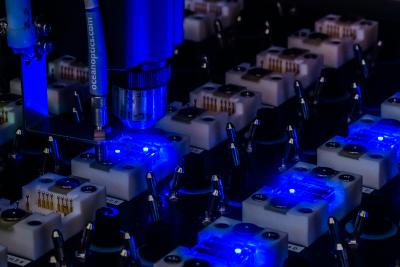A Q&A with Cynora's CEO, to discuss the company's new blue emitter
OLED material developer Cynora recently announced its first commercial product, the cyBlueBooster fluorescent blue emitter that is 15% more efficient that current fluorescent blue emitters on the market.

This was a very interesting announcement, and Cynora's CEO Adam Kablanian was kind enough to answer a few questions we had to help understand the new material and Cynora's current business and latest technology.








